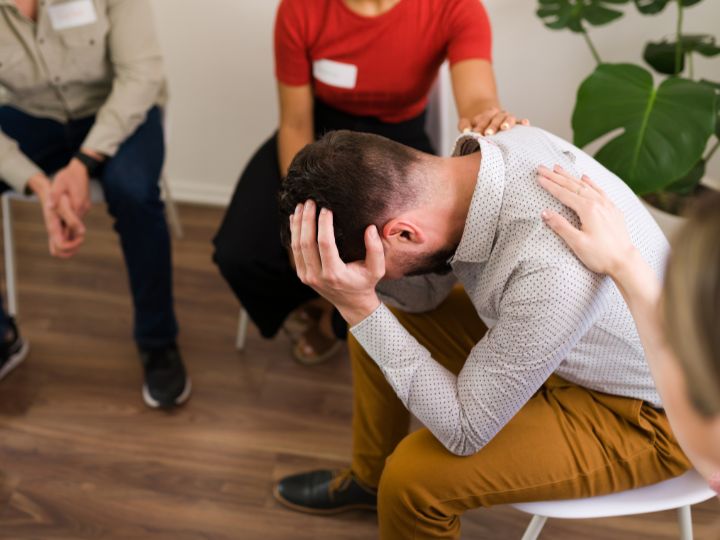Recovery from addiction doesn’t end when rehabilitation programs conclude—in many ways, that’s when the real work begins. For many Central Ohioans, the transition back to everyday life represents both an opportunity for growth and a period of vulnerability. Building a strong, supportive community is essential for long-term sobriety and healing.
The Critical Post-Rehab Period
The weeks and months following formal treatment are often the most challenging. Without the structure and supervision of a rehabilitation facility, individuals must navigate triggers, cravings, and social pressures while rebuilding their lives. Research shows that continued community support significantly increases the chances of sustained recovery.
“The most dangerous time for relapse is within the first 90 days after treatment,” explains Dr. Maria Collins, addiction specialist in Columbus. “Having a reliable support system during this period can make all the difference.”
Elements of a Supportive Recovery Community
Peer Support Groups
Central Ohio offers numerous options for peer support, including:
- Traditional 12-step programs like Alcoholics Anonymous and Narcotics Anonymous, with over 200 weekly meetings across Franklin, Delaware, and Licking counties
- SMART Recovery groups, which offer a science-based alternative to 12-step programs
- Recovery Dharma, which integrates Buddhist principles into addiction recovery
- Various specialized groups for women, LGBTQ+ individuals, veterans, and professionals
These groups provide not only accountability but also understanding from those who have walked similar paths.
Recovery Housing
Sober living environments serve as a bridge between treatment and independent living. Central Ohio has seen growth in recovery housing options, with over 30 certified recovery residences now operating in the region. These homes provide structure, accountability, and community for those in early recovery.
“Living with others who understand your journey creates a built-in support system,” says Michelle Torres, who credits her two years of sobriety partly to the six months she spent in recovery housing in Worthington.
Community Integration Programs
Reintegration into community life involves rebuilding connections beyond recovery circles. Several Central Ohio organizations facilitate this process through:
- Volunteer opportunities specifically designed for those in recovery
- Employment assistance programs that work with recovery-friendly employers
- Educational partnerships with Columbus State Community College and Ohio State University
- Recreational activities and sober social events
Technology’s Role in Recovery Support
Digital tools have expanded the reach of recovery support. Mobile applications like Sober Grid connect individuals to local resources and peer support. Online forums and virtual meetings ensure that support is available 24/7, regardless of transportation limitations or work schedules.
Family Involvement and Education
Recovery affects not only the individual but their entire support network. Family education programs throughout Central Ohio help loved ones understand addiction, establish healthy boundaries, and provide effective support.
The Central Ohio Family Recovery Network hosts monthly workshops in locations across Columbus, Delaware, and Newark, teaching communication skills and self-care strategies for family members.
Challenges in Building Recovery Communities
Despite progress, barriers remain in creating comprehensive support systems:
- Transportation limitations, particularly in rural areas of Central Ohio
- Insurance coverage gaps for ongoing recovery support services
- Stigma that prevents full community integration
- Resource disparities between urban and rural communities
Success Stories: Recovery in Action
Jason Kennedy, three years sober and now a peer support specialist in Dublin, remembers feeling overwhelmed after completing inpatient treatment. “I knew I couldn’t do it alone, so I threw myself into building connections. Now I’m helping others do the same.”
Kennedy participates in a community garden project that brings those in recovery together with neighborhood residents, breaking down barriers through shared activities.
“Recovery happens in community,” he explains. “The opposite of addiction isn’t sobriety—it’s connection.”
Finding Support
For those seeking to build their recovery community, resources abound. Ray of Hope Behavioral Health, a Central Ohio addiction treatment center, offers aftercare planning and community connection services for individuals completing treatment. Their recovery navigators help patients identify and connect with the specific supports they need, from housing assistance to peer mentorship programs.
Moving Forward Together
The journey of recovery is challenging but achievable with proper support. Central Ohio’s growing recovery infrastructure demonstrates the region’s commitment to helping individuals not just overcome addiction but thrive in its aftermath.
By continuing to strengthen these community connections and reduce barriers to support, Central Ohio is creating an environment where sustainable recovery can flourish.



